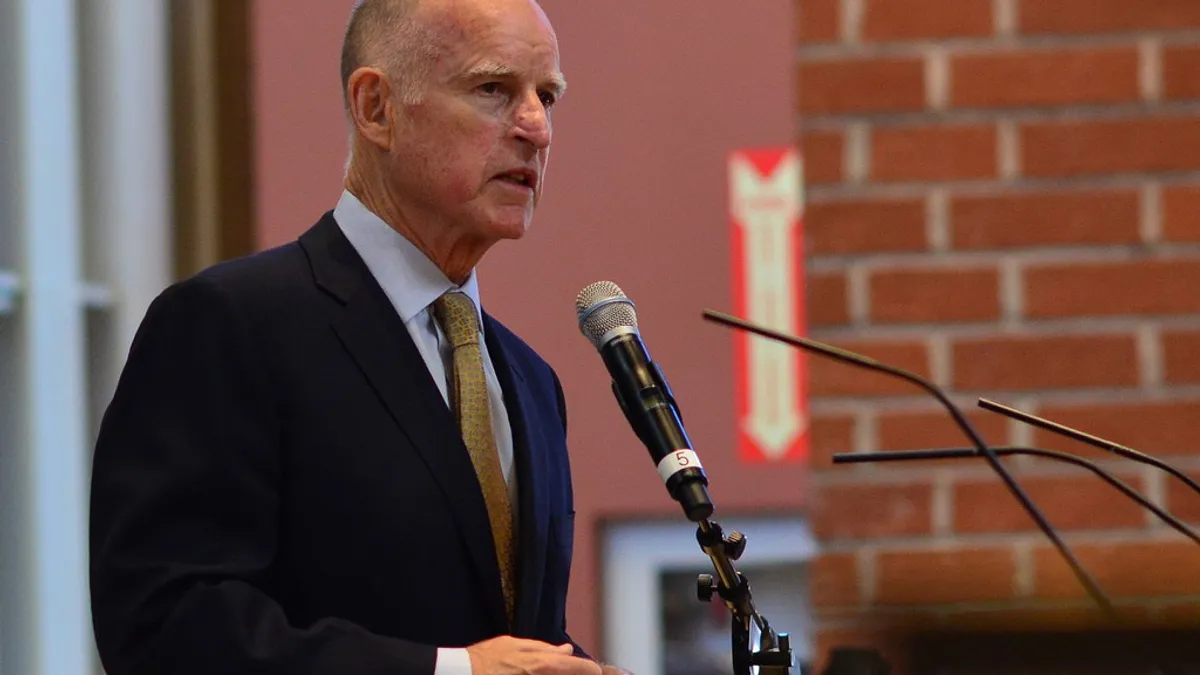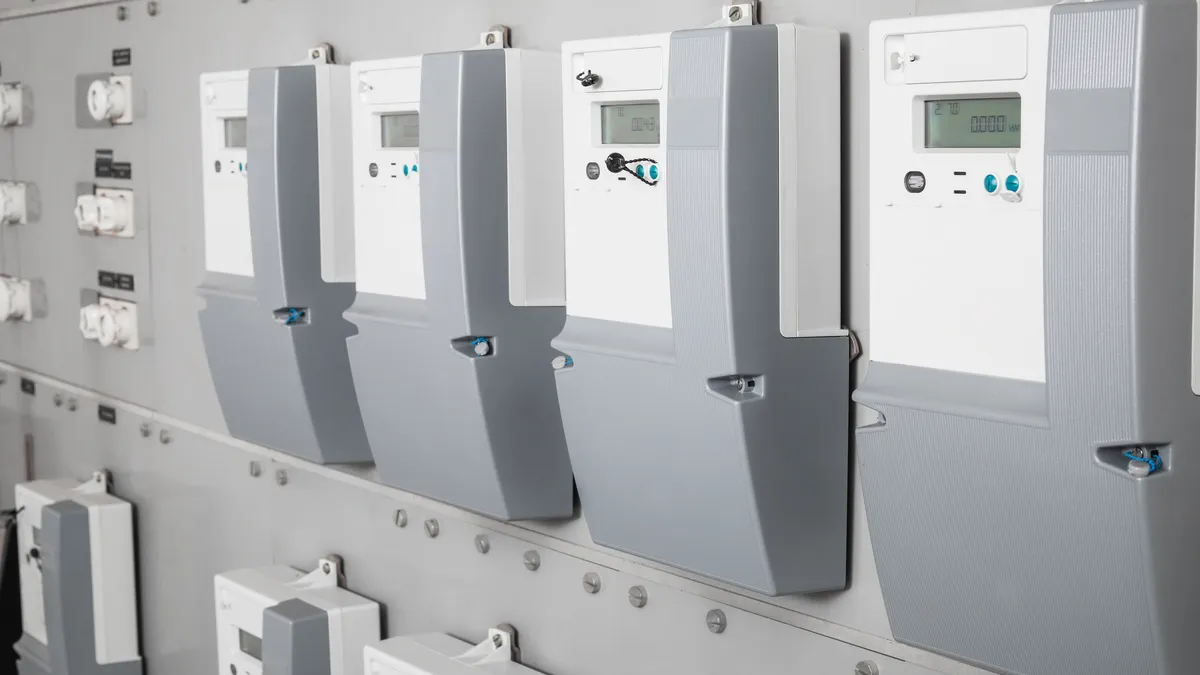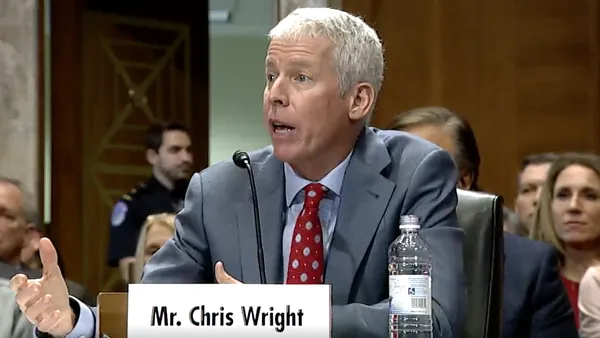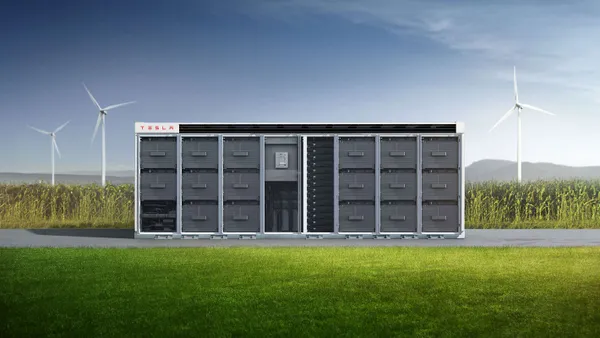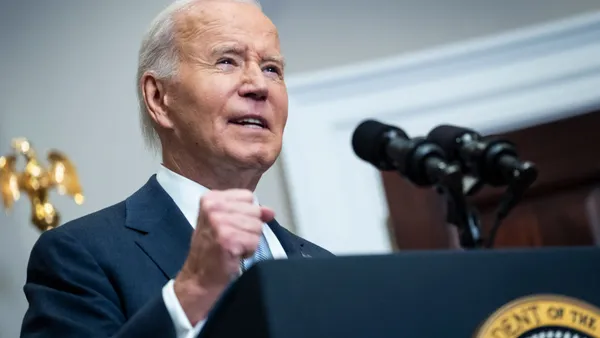Dive Brief:
- California Gov. Jerry Brown (D) on Wednesday signed a bill directing utilities to plan carbon-free alternatives to gas generation for meeting peak demand.
- SB 338, authored by State Sen. Nancy Skinner (D), would compel utilities to evaluate how storage, energy efficiency and distributed energy resources can meet peak power needs "while reducing the need for new electricity generation and new transmission in achieving the state’s energy goals."
- The California Senate voted 27 to 13 on Sept. 6 to approve SB 338, sending the bill to Gov. Jerry Brown (D) for approval. The Assembly passed the bill in late August.
Dive Insight:
California utilities will now be legally obligated to plan for how carbon-free resources can help combat the solar "duck curve."
The state regularly receives hours of plentiful solar generation at midday, followed by a steep increase in evening power demand nicknamed the "duck curve" for the shape of its load chart.
Today, that evening ramp is mostly served by natural gas generators, but California utilities are under a mandate to cut carbon emissions 40% below 1990 levels by 2030, and clean energy advocates say solar and storage can meet local power needs at a lower cost.
Skinner's bill is one of two proposed earlier this year pushing utilities to use more of that renewable energy during peak demand hours. Now that it is law, utilities will have to alter their IRP processes to evaluate "the role of existing renewable generation, grid operational efficiencies, energy storage, and distributed energy resources, including energy efficiency" to meet the hours of peak demand.
The bill is less prescriptive its former Assembly counterpart — AB 1405 — which would have required California utility regulators to set a certain percentage of power generation during peak hours that must come from renewable sources or efficiency. That bill was amended considerably to consider digital signs on state highways, not energy policy.
The bills build upon a proposal in Arizona called the Clean Peak Standard that would alter the state's renewable energy mandate to mandate a certain percentage of carbon-free power be delivered during peak hours. That proposal is currently on hold as the state considers other changes to renewable energy policy.


